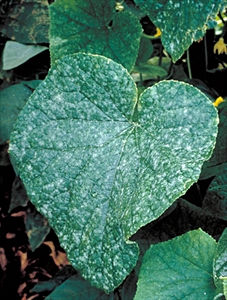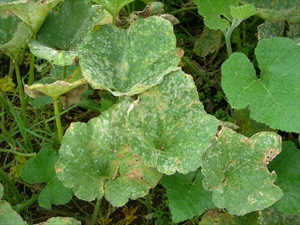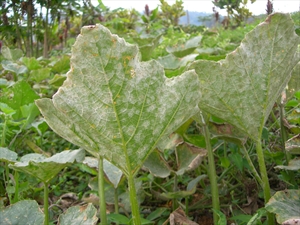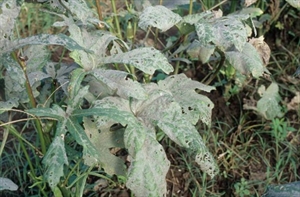Two species have been recorded: Podosphaera xanthii and Golovinomyces cichoracearum; previously Sphaerotheca fuliginea and Erysiphe cichoracearum, respectively. These are the names of the sexual forms of the powdery mildews, but in Pacific island countries only the asexual form has been found, known as Oidium species. Unfortunately, unless the Oidium form is examined miscoscopically soon after collecting identification is difficult.
Even in 1981, the Survey of Agricultural Pests and Diseases1 recognised that samples identified as Sphaerotheca fuliginea were likely confused with Erysiphe cichoracearum. Since then other taxonomic complications have arisen from molecular analyses. Golovinomyces cichoracearum, for instance, is recognised as a 'species complex', i.e., it is more than one species.
In the interim, and while the taxonomy is better understood, it is best to refer to all powdery mildew fungi of cucurbits from Pacific islands as Oidium species.







